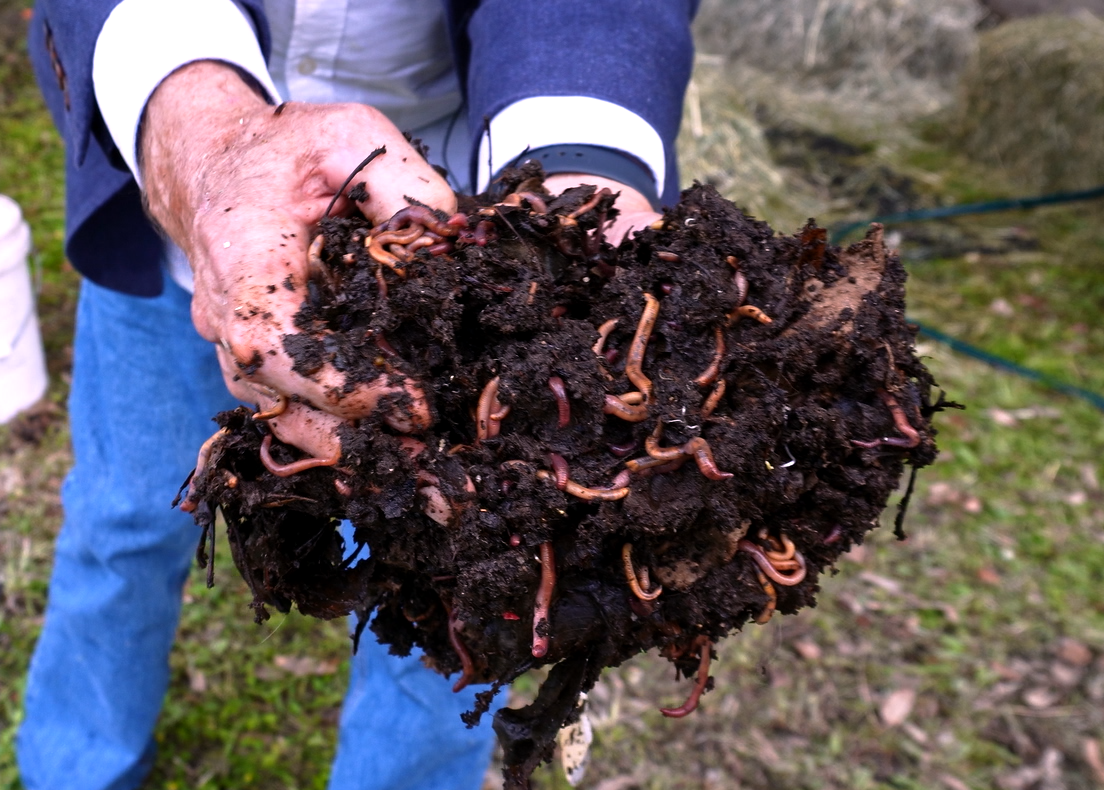Seven Productive Synergies – Part 2

In the second part of this two-part feature, we will look at the relationship between biology, soil food, compost, soil promotants and humates in our quest for productive combinations.
5) Earthworms and Soil Food
Reclaiming large numbers of earthworms in the soil is the Holy Grail of the biological approach. These creatures are little fertiliser machines that can reduce input costs as their numbers grow. Food is the key to earthworm expansion. Provide food and they will arrive like bees to a honey pot, but what is the favoured food of these dynamic soil conditioners?
Earthworms love organic matter so they will arrive when you provide green manure crops and cover crops. They also love compost, but in this case it is not the digested organic matter that is the key attraction but rather the creatures the compost contains. Earthworms feast on fungi, so fungi-dominated compost will prove most productive. Their most favourite fare, however, is protozoa, so a simple tea made from lucerne can provide a rapid boost. Liquid fish with oil intact (Nutri-Sea Liquid Fish™) boosts both fungi and protozoa, so it becomes an earthworm essential. Similarly, humic acid is a powerful fungi promotant, so it can also serve to call in the earthworms via the fungi bait.
A great repopulating strategy involves setting aside part of a paddock specifically to grow earthworms. The new workforce can then be transported around the farm to areas that require rehabilitation. Your small earthworm farm will prosper if you grow a combination of cereals, grasses and legumes and slash them regularly. Feed up the worms with liquid fish, humates and protozoa tea and watch your valuable investment grow.
6) Compost and Fertility
Composting is the accelerated conversion of organic matter into humus with a little human help. This practice is set to become the single most important strategy in our battle to neutralise global warming, as the mantra for the next decade may well become “fix carbon or fall”. This intervention in the carbon cycle stores carbon in the soil and keeps CO2 from entering the atmosphere. The concerted, planetary effort to slow climate change will involve composting anything that can be composted and this imperative is as important for homeowners as it is for farmers.
Farmers, of course, are destined to be paid for their carbon building efforts and this will prove to be the ultimate win/win. Compost builds fertility and soil life more effectively than any other input and its humus component can hold its own weight in water. If you can build your organic matter levels by just one percent then your soil can hold 170,000 L of water per hectare that it would not otherwise have stored. This water is retained right beside the roots and water storage doesn’t get more efficient than this!
Compost is an inoculum of soil life that builds biodiversity and increases the resilience of soils and plants. It is a primary earthworm promotant and it can be used as a major tool to stabilise and magnify applied fertilisers. We have found that minerals can be applied at rates as low as 10% of what is required (according to a soil test) when these fertilisers are combined with compost. We have coined the term “MEND” (Microbially Enhanced Nutrient Delivery) to describe this phenomenon. There can be tremendous benefits in putting the microbes behind the minerals. This principle also applies to microbial inoculums like compost tea or Nutri-Life 4/20™. If small amounts of foliar fertilisers are combined with these microbial inputs they will be utilised much more efficiently.
7) Soluble Fertilisers and Humates
This is probably the greatest example of synergy as it involves the combination of chemical agriculture and natural inputs that is the essence of the “best of both worlds” fusion farming approach. The performance of soluble fertilisers is dramatically enhanced when they are combined with small amounts of soluble humates. Acid phosphates become phosphate humates with the potential to deliver phosphate throughout the crop cycle. Urea becomes a urea humate with greatly enhanced stability and longevity. Highly leachable boron becomes a boron humate which is now stabilised and absorbed much more effectively. Even nitrate based fertilisers like calcium nitrate can be chelated with humates and foliar sprayed to great effect.
The addition of humates does not just serve to stabilise and magnify all fertiliser inputs, it also boosts the organisms that deliver minerals to the plant and can help protect some of these organisms from the harsh effects of acids and salts. When soluble humate granules are combined with DAP/MAP, for example, the carbon dense humic acid can help reduce the damage to mycorrhizal fungi that is now known to be associated with these acids.
Even the harshest of all fertilisers, anhydrous ammonia, can be softened using humates. In this case the gas is first passed through water to create aqua ammonia. Then, humic acid can be added to create an ammonium humate which is a sustainable form of nitrogen.
Potassium is expensive and easily leached but the addition of humic acid to potassium nitrate creates a potassium humate with a much longer soil life.
In Conclusion
Productive synergies create a result which is greater than the sum of their parts. Biological agriculture becomes a creative, problem solving enterprise when we seek out these synergies. The aim is to create a functional hybrid which outperforms all other forms of agriculture in terms of both sustainability and profitability.
To read Part 1 of this article, please click here.
